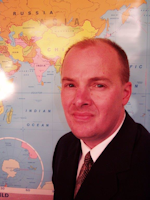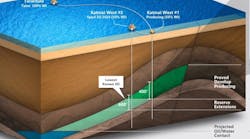作者:Bruce Beaubouef,执行编辑
根据油田市场咨询公司最近发布的报告,Evercore ISI 列出的“三大”海上钻井公司(Transocean、Noble Corp. 和 Valaris)均报告称,它们“海上基本面强劲,前景乐观”,这种状况可能会延续到 2030 年。
Evercore 的分析基于三家海上钻井承包商在 8 月初连续召开的财报电话会议上提供的信息。
Evercore 写道:“投资不足以及对能源安全和可靠性的日益关注继续推动多年增长。”“油价相对稳定在约 80 美元/桶布伦特原油,预计由于需求增加、地缘政治制约和 OPEC 审慎的供应决策,油价将继续保持高位。高油价和对海上上升周期长短的重新认识,降低了石油和天然气行业的周期性风险,可能会使 2025 年及以后成为全球增长年。”
该公司写道:“我们相信海上钻井子行业仍处于多年上升周期的早期阶段。”分析指出,部分钻井平台的日费率已大幅反弹,主要地区的需求正在增加。前沿日费率徘徊在 50 万美元/天左右,越来越多的合同被授予 50 万美元/天的低至中水平。浮式钻井平台和自升式钻井平台的市场利用率已大幅提高,分别达到 80% 和 90% 左右。
尽管日费率快速上涨,但新建钻井平台仍然稀缺,钻井平台的恢复速度也低于预期,“这让我们相信日费率很有可能上涨,尤其是在 2025 年末或 2026 年,”Evercore 写道。“我们预计,随着强劲的 FID 渠道转化为固定装置,钻井平台供应将进一步收紧,2024 年上半年的签约活动将有所恢复。”
该公司指出,今年迄今已有 11 个项目达成最终投资决定,其中 9 个项目为浅水或深水项目。预计到今年年底,另有 20 多个项目将达成最终投资决定,而 2023 年获批项目总数为 24 个。11 个项目的承诺投资额超过 300 亿美元(储量超过 30 亿桶油当量),主要包括深水 FPSO 开发项目。其余项目的投资额可能超过 800 亿美元,2024 年的承诺资本支出总额可能与 2023 年的约 1250 亿美元持平或略低,其中大部分预计将分配给海上开发。
Evercore 表示,2024 年上半年的承包活动有些缓慢,原因是 1) 资本纪律和利益相关者协调的复杂性,2) 过去几年全球项目积压急剧增加导致的供应链限制,以及 3) E&P 整合。深水钻井平台的积压订单可能会在 2025 年保持平稳,然后在 2025 年下半年恢复。
不过,该公司还指出,由于 OPEC+ 有效管理供应,碳氢化合物需求增加和大宗商品价格稳定,海上基本面得到了良好支撑。布伦特原油现货价格目前约为每桶 80 美元,五年期远期价格仍保持在每桶 70 美元的水平,这继续支持当前海上和国际上升周期的持久性。
该公司写道:“我们预计 UDW [超深水钻井平台] 的承包活动将在 2025 年下半年及以后显著改善。”Evercore 表示,金三角地区占全球 UDW 市场的 75% 以上,并指出目前巴西有 34 个钻井平台(去年有 27 个),圭亚那有 5 个钻井平台,哥伦比亚有 1 个钻井平台,但苏里南附近没有。报告指出,到 2026 年,该地区预计将再增加 5 个钻井平台,达到 45 个钻井平台。Evercore 表示,拉丁美洲 UDW 机会增加的主要驱动因素是 Sepia 和 Roncador 招标。
至于美国墨西哥湾,该公司指出,“尽管上游整合活动活跃,但该地区仍保持稳定,目前有 23 个深水钻井平台在运行。我们预计,美国墨西哥湾和墨西哥在短期内将保持平稳。”
报道补充称,西非目前共有约18座已签约的UDW钻井平台(较去年略有减少),其中安哥拉以7座钻井平台位居榜首。
Evercore 还指出,“未来几年,莫桑比克、加纳、尼日利亚和纳米比亚有许多海上项目有望达成最终投资决定。”报告称,纳米比亚可能发展成为一个拥有至少三到五个钻井平台的市场;目前它只有一个活跃的钻井平台。总体而言,到 2026 年,非洲可能推动 UDW 钻井平台需求增加,达到五个以上。
地中海和黑海地区可能会在未来一到两年内失去一座钻井平台,而印度尼西亚预计将从 2025 年底或 2026 年开始在远东地区增加几座钻井平台。挪威、英国和加拿大的恶劣环境市场预计将保持平稳。
报告还指出,沙特阿美计划再开放 5 座钻井平台。3 月初,该公司宣布计划在 2024 年至 2028 年期间减少约 400 亿美元的资本投资,这主要是因为沙特决定将生产能力维持在 1200 万桶/天。这导致 Safaniyah 扩建项目(+7 亿桶/天/260 亿美元)和 Manifa 扩建项目(+3 亿桶/天/60 亿美元)被推迟,伍德麦肯兹表示,目前预计这两个项目将分别于 2026 年 7 月和 2027 年 2 月实现最终投资决定。
由于两个石油项目的推迟和该国的重点转向天然气,阿美公司迄今已暂停了 22 个钻井平台,其中至少六个钻井平台已在其他地区获得工作。尽管沙特阿拉伯预计将释放至少五个额外的钻井平台,但 Evercore 表示,它“预计自升式钻井平台日费率不会有任何显著下降”。
Evercore 表示,浮式钻井平台和自升式钻井平台的日费率都在上涨。钻井平台日费率上涨的主要驱动因素是钻井平台供应紧张;钻井人员对钻井平台恢复运营保持纪律;新钻井平台缺乏;以及钻井平台自然流失。
报告指出,“我们看到日均 50 万美元以上的合同数量正在增加。”值得注意的是,UDW 浮动钻井平台的前沿日费率在 50 万美元/天的范围内,尽管“一些钻井公司可能会以较低的日费率签订长期合同或短期合同来填补空白。”
Evercore 表示,在短期内(明年),可能会有五到十艘第七代钻井船进入市场。但尽管如此,该公司表示,“随着运营商继续争夺优质资产,开发项目 [继续] 实现,我们预计日费率将进一步上涨。”
报告还指出,恶劣环境自升式钻井平台的日租金也在上涨,前沿日租金已升至15万美元/天以上。











